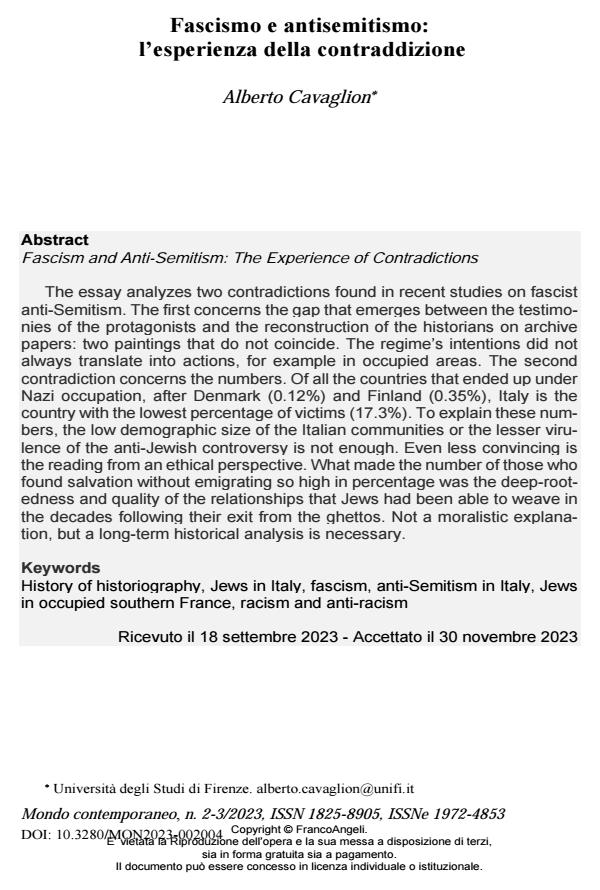Fascism and Anti-Semitism: The Experience of Contradictions
Journal title MONDO CONTEMPORANEO
Author/s Alberto Cavaglion
Publishing Year 2024 Issue 2023/2-3
Language Italian Pages 15 P. 37-51 File size 281 KB
DOI 10.3280/MON2023-002004
DOI is like a bar code for intellectual property: to have more infomation
click here
Below, you can see the article first page
If you want to buy this article in PDF format, you can do it, following the instructions to buy download credits

FrancoAngeli is member of Publishers International Linking Association, Inc (PILA), a not-for-profit association which run the CrossRef service enabling links to and from online scholarly content.
The essay analyzes two contradictions found in recent studies on fas-cist anti-Semitism. The first concerns the gap that emerges between the testimonies of the protagonists and the reconstruction of the historians on archive papers: two paintings that do not coincide. The regime’s intentions did not always translate into actions, for example in occupied areas. The second contradiction concerns the numbers. Of all the countries that end-ed up under Nazi occupation, after Denmark (0.12%) and Finland (0.35%), Italy is the country with the lowest percentage of victims (17.3%). To ex-plain these numbers, the low demographic size of the Italian communities or the lesser virulence of the anti-Jewish controversy is not enough. Even less convincing is the reading from an ethical perspective. What made the number of those who found salvation without emigrating so high in per-centage was the deep-rootedness and quality of the relationships that Jews had been able to weave in the decades following their exit from the ghettos. Not a moralistic explanation, but a long-term historical analysis is necessary.
Keywords: History of historiography, Jews in Italy, fascism, anti-Semitism in Italy, Jews in occupied southern France, racism and anti-racism
Alberto Cavaglion, Fascismo e antisemitismo: l’esperienza della contraddizione in "MONDO CONTEMPORANEO" 2-3/2023, pp 37-51, DOI: 10.3280/MON2023-002004